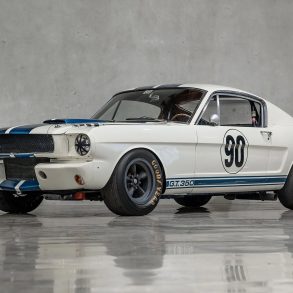By Jeff Walker, Chubb Collector Car

If you’re a collector, you know you’re charged with protecting more than just a car; it is a piece of history, and making sure it lives on is in everyone’s interest. So what do you do if your classic car is damaged?
First of all, safety comes first. Poking around a partially collapsed garage could kill you. Flood waters are filthy and carry all kinds of toxins. Fallen trees can be spring-loaded traps. If power lines are down, treat them as if they are live.
Assuming you have full access to your car in a safe place, we offer some basic tips you can use to help mitigate further damage and get the restoration process heading in the right direction. Most importantly, be sure to call your insurer’s claims number and report the damage as soon as possible.
If your car is flooded:
- Get the car in the sun. The first step to flood recovery is drying out the car. Outside in the sun is the best place.
- Wash the car. This is especially true if the car was swamped with salt water, which is highly corrosive and can chew through metal in weeks. Wash the frame, engine room and any other areas you can with fresh water and soap. This step may be the one that saves the car.
- Get under the hood. Open up the motor by taking out the spark plugs and draining oil. Take note if there is oil in the water. If not, the motor may be ok. If you find other clues to the contrary, such as a soaked air cleaner or water-borne debris in the carb, take extra precautions. When in doubt, don’t spin the motor.
- Electrics. Inspect what you can. Make sure components are dry before you attempt to turn on the ignition. If a part looks questionable, replace it, because it’s cheaper than having a fire.
- Fluids. In addition to the engine oil, change transmission, axle and any other fluids your car may have.
- Interior. This is where a lot of damage can be done quickly. Seat foam, carpets, leather and paper-based components can become saturated. Consider replacement components if available. If it is really bad, consider a full strip and fresh-water rinse of the gutted interior.
If your car is crushed:
- Protect the car from the elements. If you can safely get to the car, throw a tarp on it.
- Take photos. Sometimes a camera can be your best defense. You’ll be looking at the damage before an insurance adjuster, so documentation is critical.
- Important papers. If you stored any important documents with the car, you may want to remove them if the vehicle’s security is comprised.
The most important thing to remember is that your car can likely be fixed. Classics can be easily restored since the electronics are not complicated and disassembly and clean-up are a restorer’s forte. Talk to your insurer to see what your options are when choosing a restoration shop. Chances are, you’ll find a good shop that can make the disaster a distant memory.
[Source: Jeff Walker; photo: Tim Scott]










Thanks for the info.
I am going through all of this right now with my Jag after Sandy.